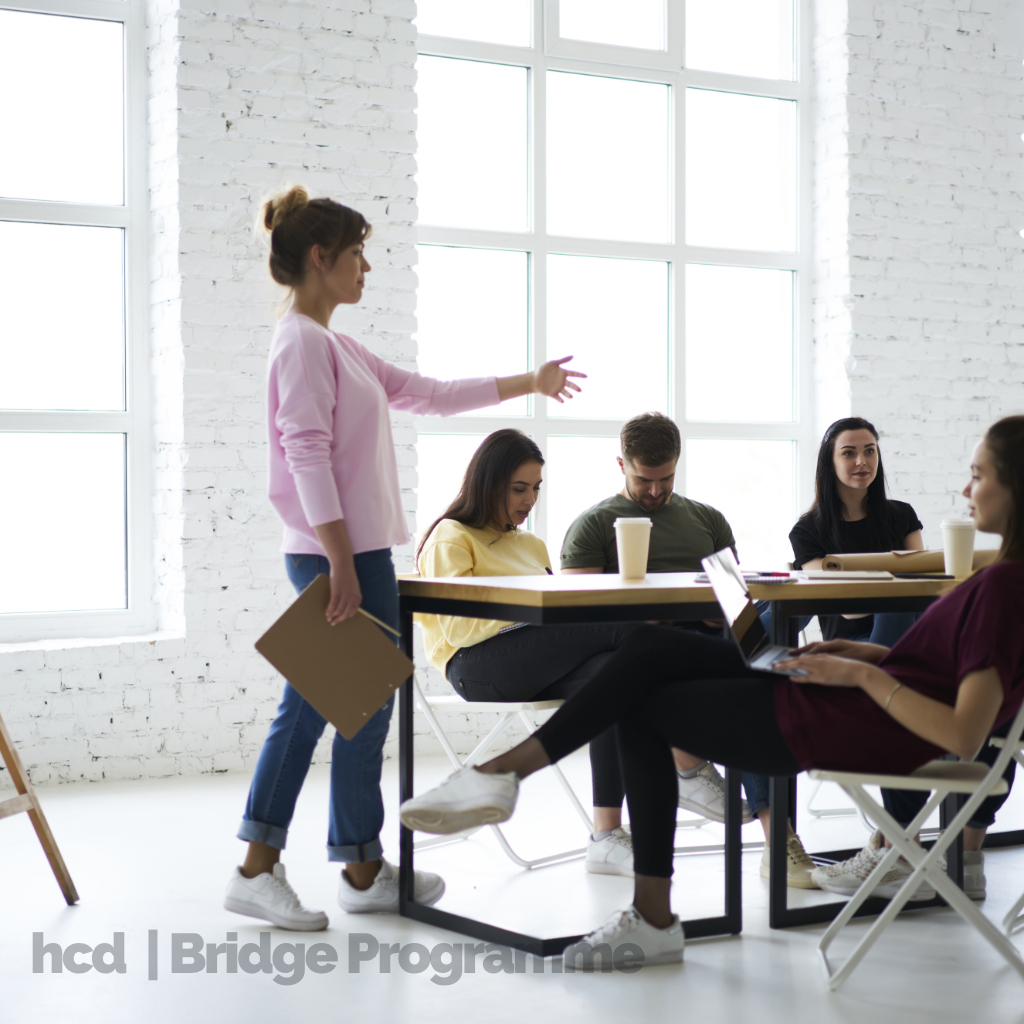Advance your career in Human-centred Design
HCD-Micro Masters
Duration
This program has a blended design foundation program with digital design & strategy management. In 12 different modules, this program will take two semesters ( 12 academic months ) and an Internship Graduation project with collaboration with Industry of 6 Months.
Eligibility
Education by practice
These qualifications are available to learners aged 16 years or over. Learners should have a bachelor's/graduate diploma. Aspirants with relevant experience of more than three years without a bachelor's equivalent also can apply. Their application will be considered as part of our learning by practice program.
it is recommended that Learners must be able to demonstrate the requirements of the qualifications and have access to required assessment opportunities and relevant resources.
Please refer to specific assessment requirements on individual components for more information.
Hybrid Centers should undertake initial assessment activities with learners to ensure that the chosen qualification is appropriate and they are capable of achieving it.
Objective
The objective of this qualification is to:
This curriculum is designed to create design leaders of tomorrow. This should enable designers to be useful and joyful products and services.
Eligibility to become a design leader in organizationsTo be able to ideate, design, and execute products and services in various sectors.
To be part of a design team in an organization, be a thought leader
To practice design thinking in various salutations and come up with creative problem-solving ideas.
Curriculum
The Master's program in HCD (Human-centred Design) is designed for students interested in researching, designing, and engineering technological interactions from a human perspective. Our students have various academic and professional backgrounds, with an approximate breakdown of one-third from technical and engineering backgrounds, one-third from social sciences backgrounds, and one-third from design backgrounds.
Invest in professional goals.
Enroll in our fall semester now.
Data-Driven Design thinking is a human-centered approach to innovation—based on understanding user’s needs, rapid prototyping, and generating creative ideas—that will transform the way we develop products, services, processes, and organizations.
Design thinking will enable us to make decisions based on what users want instead of relying only on historical data or making risky bets based on instinct instead of evidence.
The HCD programs are designed keeping this in mind.
Enabling our students to become product leaders of tomorrow.
Design thinking brings together what is desirable from a human perspective with what is technologically feasible and economically viable.
Desirability: What makes sense to people and for people?
Feasibility: What is technically possible within the foreseeable future?
Viability: What is likely to become part of a sustainable business model?
Be Future-ready
With serious CX / UX engineering HCD certifications
Design Thinking
HCD Certification
Learn the core skills and mindsets of design thinking.
Design Foundation
Color experiments
Learn the core skills and mindsets of design practice.

Design Foundations
Form explorations
Learn the core skills and mindsets of design practice.


HCD
HCD - Human-Centered Design
Human-centered design (HCD) has long played a central role in designers'/innovators' work across the globe. The first product's innovation principle is 'design with the user' – ensuring that a project takes a user-centric approach. HDC method takes this a step further by using a set of tools to tailor solutions for children using repeatable, human-centered methods for creative problem solving and innovation.
Human-centered design (HCD) is a creative approach to solving social issues and malicious challenges with people at the center.
INNOVATIVE RESPONSE: HUMAN-CENTRED DESIGN
Human-centered design (HCD) is a problem-solving process that begins with understanding a challenge's human factors and context. It requires working directly with users —the people who use the service or deliver the solution —to develop new ideas that are viable and appropriate in their context. Designing for people and their everyday actions helps uncover and solve the correct problems using local capacities and minimal resources.
This process is vital because it asks us to:
This allows the unexpected to reveal itself and points us toward new solutions.
Human-centered design (HCD) has long played a central role in designers'/innovators' work across the globe. The first product's innovation principle is 'design with the user' – ensuring that a project takes a user-centric approach. HDC method takes this a step further by using a set of tools to tailor solutions for children using repeatable, human-centered methods for creative problem solving and innovation. Human-centered design (HCD) is a creative approach to solving social issues and malicious challenges with people at the center.
INNOVATIVE RESPONSE: HUMAN-CENTRED DESIGN
Human-centered design (HCD) is a problem-solving process that begins with understanding a challenge's human factors and context. It requires working directly with users —the people who use the service or deliver the solution —to develop new ideas that are viable and appropriate in their context. Designing for people and their everyday actions helps uncover and solve the correct problems using local capacities and minimal resources.
This process is vital because it asks us to:
• Use participatory methods.
No expert has more knowledge than a caregiver, nurse, or community health worker about solving their most pressing challenges. The methodologies that comprise HCD and related approaches acknowledge this by focusing on collaboration and designing with —not for —the people we seek to serve. Problems are defined locally, and solutions are developed locally.
• Be inclusive.
We cannot design sustainable solutions without considering the full complex, dynamic and interconnected system. Observing and interviewing, not only with those who fall within the average set of circumstances but also outliers who represent a more diverse set of circumstances, forces us to reexamine existing assumptions and include the perspective of all genders and belief systems, social circumstances, and family dynamics.
• Think critically.
Putting people at the center of the process means that we uncover needs that service providers and program recipients may not know they have —even though these needs influence actions and decisions. After honing listening and observing skills, we see more than what is visible and hear more than what is said.
This allows the unexpected to reveal itself and points us toward new solutions.
• Design to hand-off.
From the beginning, solutions are tested in the real world with real stakeholders, not with consultants in an office. Solutions that make it past this “prototype” step lend themselves to local ownership because the community and health workers have been involved in their development from the beginning. The outcome is action-oriented, implementation-ready examples—not static reports.







